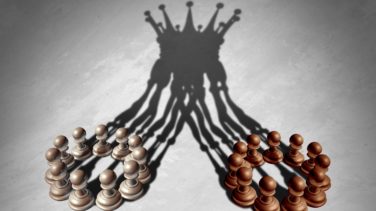For the first time in the history of business, up to five generations of employees are working together. Today’s workforce includes Traditionalists (born 1927-1945), Boomers (1946-1964), Gen X (1965-1980), Millennials (1981-1996), and Gen Z (1997-2015). Uniting people of different ages, perspectives, experiences, interests, and skillsets in shared goals is not without challenges, though multigenerational workforces are both valuable and critical to the future of work. As professionals with more than a half-century between us working in biopharma and diagnostics marketing and communications from the corporate (Ayaz Malik) and agency (Sandra Stahl) sides, we believe nurturing multigenerational teams is an especially powerful yet underutilized strategy for our industry.
We recognize that each generation has grown up in radically different times which shapes how they approach challenges and view the world, but generational diversity is not exclusively related to age. Geography matters, too, as cultural, political, and societal nuances related to place at any given time come into play and contribute to a more multi-textured, foundation. This can be a considerable asset for almost all we do in healthcare marketing and communications whether for brands, disease awareness, corporate communications, R&D, thought leadership, or HR.
Consider the following four benefits to utilizing multigenerational teams:
1. Generationally Diverse Teams Bring a Deeper Understanding of Patient Needs, Desires, and Expectations
Marketing and communications teams that include people of similar ages and backgrounds as those of all brackets of the patient target audiences can enrich planning by adding an awareness of the emotions, feelings, and circumstances that goes far deeper than what market research can reveal. Among the best ways to serve patients and help healthcare providers communicate about a condition or product is with empathetic approaches that mirror where patients are in their lives, and consider their frustrations and discontents as well as what makes them satisfied and in control. Patients are more motivated to pay attention, act, and follow a treatment plan when they recognize themselves in the marketing.
2. Working on Multigenerational Teams Builds Skills that Are Critical for Improving Diversity and Inclusion
For the last few years, a spotlight has been shone on the long-overdue need to improve inclusivity and representation. Unfortunately, in some companies and organizations, DEI is treated as a series of boxes to tick without involving any meaningful changes to company culture. In our healthcare space, however, improved understanding and practice of diversity is required and urgent—and the only way we’ll advance medicine equitably.
To be sure, steps have been taken. For example, improving diversity and inclusion in clinical trials is a significant R&D objective at many companies, biobanks are collecting data from a broader array of populations, and HR teams are reaching beyond typical sources to recruit from wider talent pools. Working in generationally diverse environments requires active listening, sensitivity to language, cross-cultural collaboration, and self-awareness—skills that help embed diversity and inclusion in companies and the work we do, and foster much needed change.
3. The Combination of Experience, Digital Savvy, and Analytics Contributes to the Development of Novel Solutions and Content that Gets Maximum Visibility Across Channels
Consider that 85% of company employees say they come up with more innovative ideas and solutions thanks to an age-diverse team. This is a result of people learning from each other, hearing different perspectives on the same idea, and then knowing how to amplify it and to whom. Now imagine the advantages different perspectives confer to the creativity and effectiveness of ideas within your own teams. Then add the sensibilities of your people of different ages, experiences, digital and technological expertise, and how those fluent and facile in AI and analytics will ensure the idea is turned into content that will be seen by the right stakeholders and on their preferred platforms.
For example, one of us (Stahl), recently brought together a multigenerational team to create podcast serials featuring scientists at different stages of their careers to reach scientists from undergraduates and post-docs to 40-year veterans, essentially five generations of scientists. The content focused on long-standing challenges (e.g., only 10-15% of proteins are druggable) as well as approaches—new and future—for drug discovery and development.
Every aspect of the program from the content to the recording of episodes to the promotion reflected the real-world experience of the older members of the team who drew on personal and professional successes and failures together with the interests, know-how, and skillsets of the younger audience. By combining the talents of a multigenerational team, the result was an engaging podcast that reached thousands of the right listeners who learned about the program through promotion that reached them on their preferred platforms.
4. Retention and Attraction of Multigenerational Talent
A major driver for many of us working in our industry is to make a meaningful contribution to healthcare and improve people’s lives. Multigenerational teams are a significant step toward achieving this. Talented people want to work in places where they see diversity of perspective, thinking, and skills.
All this said, multigenerational teams can present formidable challenges. A recent report revealed age discrimination is still highly prevalent. But putting in the work to leverage the unique strengths of each generation to bring life-changing and often life-saving therapies and solutions to patients who need them is worth the effort.
Marketing and comms teams that go beyond simply accepting generational differences by leveraging them proactively will lead to increased engagement, innovation, and organizational success. We have in front of us a unique opportunity to not only appreciate but harness the power of generational diversity as a competitive advantage.










